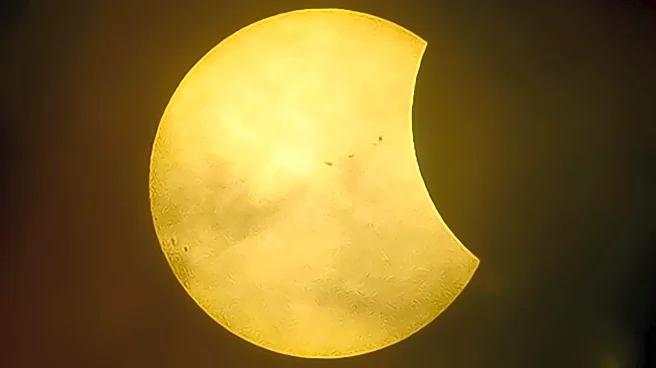What is the story about?
What's Happening?
On September 21, a partial solar eclipse transformed the sun into a fiery crescent, captivating observers across New Zealand, Antarctica, and Pacific island nations. The eclipse occurred as the moon passed between Earth and the sun, partially obscuring the solar disk. Photographers in New Zealand captured stunning images of the event, showcasing the sun's crescent shape against the backdrop of clouds and ocean. The eclipse was also observed from space by NOAA's GOES-19 satellite.
Why It's Important?
Partial solar eclipses offer unique opportunities for scientific observation and public engagement with astronomy. They allow researchers to study the sun's atmosphere and solar phenomena, contributing to our understanding of celestial mechanics. For the public, such events spark interest in astronomy and provide educational opportunities to learn about the dynamics of the solar system. The visual spectacle of the eclipse also inspires artistic expression and cultural appreciation of natural phenomena.
What's Next?
Following the partial solar eclipse, New Zealand will anticipate a total solar eclipse on July 22, 2028, which will pass directly over its southern island. This future event promises even more dramatic celestial displays and opportunities for scientific study. In the meantime, astronomers and enthusiasts will continue to monitor and prepare for upcoming eclipses, ensuring that equipment and observation strategies are optimized for capturing these rare occurrences.
AI Generated Content
Do you find this article useful?

















